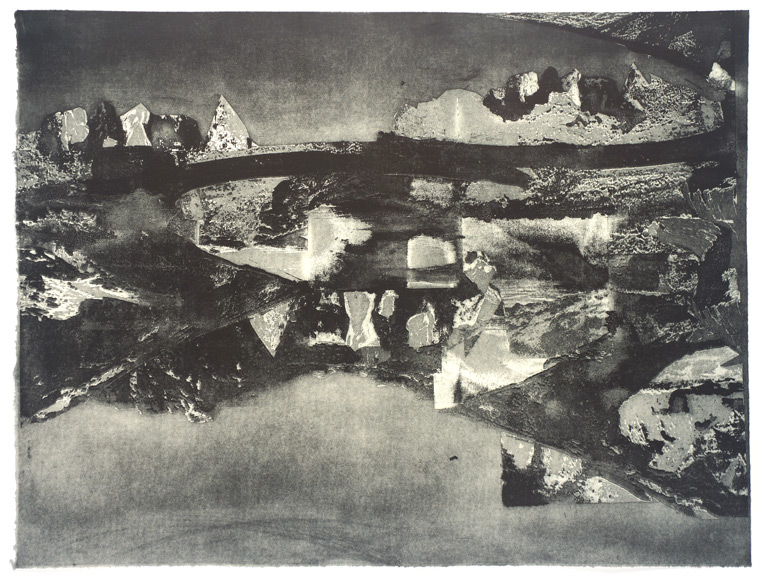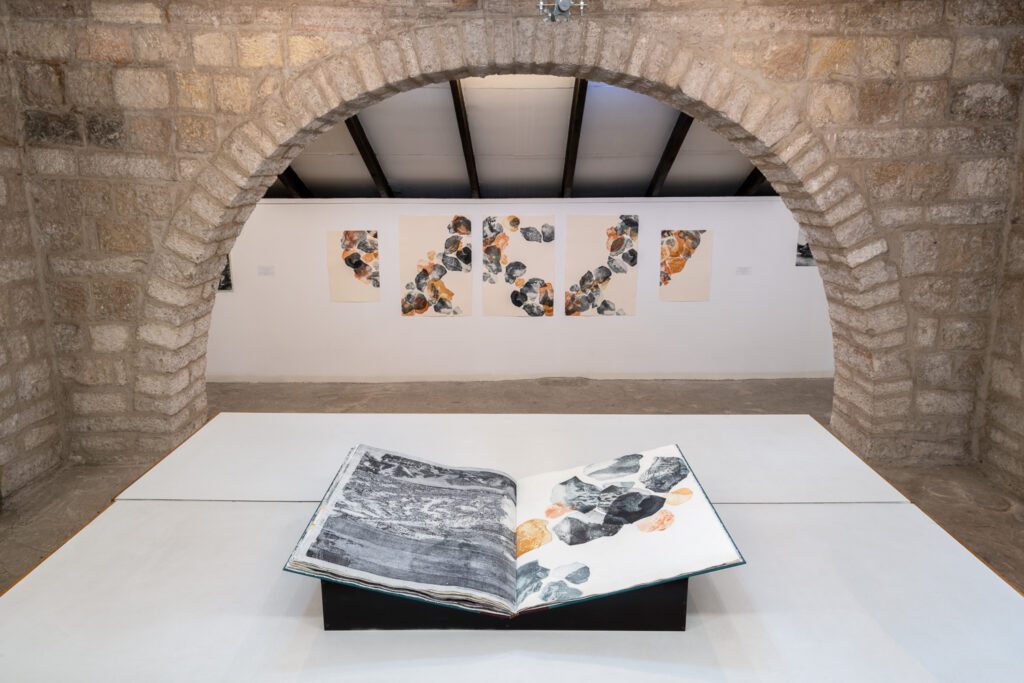
Opening:
February 21, 2021
Closing
July 1, 2021
Curator: Irena Gordon
Escape Landscapes II, 2018-2020
3D-toor at the exhibition and workshop (floor 4)
Einat Amir’s project Escape Landscapes II was created at the Jerusalem Print Workshop following her winning of the 2018 Alima Prize for Printmaking from the Ein Harod museum of art. It ran on for two years in continual dialogue with the master-printer Ran Segal, producing dozens of etchings in a variety of techniques. Together, these compose a local and imagined, familiar and mysterious atlas spread out on the gallery walls, available to viewers who wish to wander in its spaces. The imagery is based on photos of Erez-Israeli landscapes from the Mihlal Youth Encyclopedia, which was found in every Israeli household in the 1950s and 1960s. The 1956 volume focuses on the history, population, climate, botany, zoology and natural resources of the land from the 13th century BCE until its publication. It expresses distinct ideological perceptions of the time , combining pristine sights, utterly different from the landscapes we know today. Amir added to this reservoir of encyclopedic images her own photographs and some photographic collages she created before and during the project.
Over the past year, Amir was also awarded the Indie Prize for Photography and exhibited Escape Landscapes I at the Indie Gallery in Tel Aviv (curator: Sally Haftel Naveh). The exhibition concluded the first part of her investigation of local landscapes, also based on the encyclopedia, on which she worked in parallel with her work on the current project.
At the Workshop, Amir created the landscape etchings in several ways: she turned some of the photographs into black-and-white Xeroxes, which she later transferred to metal plates using thinner, then etched them; for another part she separated the photographic images on the screen, transferring them to the metal plates with sugar; and there were also “regular” transfers to the metal plate with photo emulsion. An archive of landscapes was thus created, incorporated with cut images from plates that had not been etched well. Amir further interfered using techniques of sugar and grinding, acquaint and polished acquaint, until these landscapes, familiar and alien at once, came into being, drifting in an eternal rainbow of gray, black and white.
As they spread, the landscapes also coalesce into close-ups of rocks that Amir photographed and processed. In another series, each rock is a separate etching, a landscape image and a peephole into a landscape image; a window to a world created in the spirit of Leon Battista Alberti, an Italian writer, philosopher and artist who described in a 1436 essay the painting, namely the landscape painting, as a gaze through a window – a gaze directed towards the mere act of painting, the act of pictorial representation. In the last works the rocks themselves are turned into landscapes, piles of almost abstract ocher-yellow and black stains against the white-yellow shade of the paper.
From the remains of the etching process Amir created collages made of scraps of printings, which look like textile sheets. From these collages she created a singular 50×70 cm artist’s book. The book, bound at the Workshop by Wanja Schub, is in itself a sculptural object, providing a glimpse into the etching process, the intermediary states of printmaking, and the ways images and compositions change in the process. This atlas invites the viewer to leaf through it with his or her entire body, delve into the landscape fantasy, and moreover, into the artistic act, which draws from reality yet creates an alternative existence.
The project, based upon the two media that have accompanied encyclopedias and science books at the outset – etching followed by photography – proposes a new territory, or rather ex-territory, utopic or dystopic, with its own rules, borders and landscapes. It manifests place and landscape as products of reality and imagination, observation and fantasy, politics and nature. Escape Landscapes II offers primordial sights that deceive the viewer and question scientific documentation and research, celebrating the genre of landscape representation and its significance, aesthetics and criticism.
